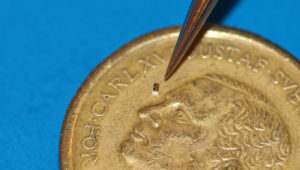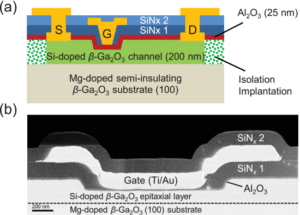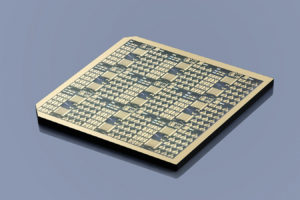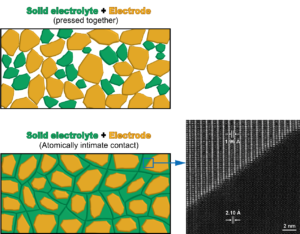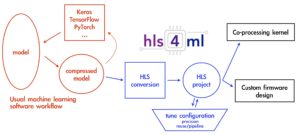
EDACafe Editorial Roberto Frazzoli
Roberto Frazzoli is a contributing editor to EDACafe. His interests as a technology journalist focus on the semiconductor ecosystem in all its aspects. Roberto started covering electronics in 1987. His weekly contribution to EDACafe started in early 2019. Nano-accelerometers; silicon thermoelectric generators; gallium oxide MOSFETs; solid electrolyte batteries; and more research newsSeptember 5th, 2019 by Roberto Frazzoli
Let’s focus on recent academic research achievements this week – but first, a quick look at some industry news. According to the Semiconductor Industry Association, worldwide sales of semiconductors were $33.4 billion in July 2019, 1.7 percent more than the June 2019 total of $32.8 billion, but 15.5 percent less than the July 2018 total of $39.5 billion. Globalfoundries has filed multiple lawsuits in the U.S. and Germany alleging that certain technologies used by TSMC infringe sixteen GF patents, and seeking orders that prevent semiconductors produced with those technologies from being imported into the U.S. and Germany. Rambus has completed the acquisition of Northwest Logic and announced the upcoming acquisition of security IP from Verimatrix, formerly Inside Secure. GigaDevice Semiconductor has launched its RISC-V based GD32V series of 32-bit general-purpose MCU products, fully compatible with existing GD32 ARM-based MCUs. Ansys is boosting its autonomous vehicles simulation solution with the integration of Hologram, a system developed by Edge Case Research. Graphene-based world’s smallest accelerometer A research team involving KTH Royal Institute of Technology (Stockholm, Sweden) and partners from Aachen, Germany, has developed the smallest accelerometer yet reported, using graphene ribbons with suspended masses. As detailed in this paper, the new NEMS (nano-electromechanical system) is based on a piezoresistive principle. It is dramatically smaller than any MEMS accelerometers available today, but retains the required sensitivity and is compatible with large-scale semiconductor manufacturing technologies. Efficient silicon-based thermoelectric generators use nanoblades instead of nanowires Professor Mark Lee from University of Texas at Dallas has teamed with Texas Instruments to develop mass-producible silicon devices that convert heat into electric energy with good efficiency. The achieved performance is good enough for the new silicon devices to compete against the best heat-harvesting materials, that are either rare or toxic and difficult to use within a basic semiconductor process. Previous researches have shown that silicon can be a good thermoelectric generator in the form of nanowires, but these extremely thin filaments are too small to be compatible with chip-manufacturing processes. To overcome this, the team relied on “nanoblades” — only 80 nanometers thick but more than eight times that in width. Conversion efficiency is lower than nanowires, but this loss can be offset by using many nanoblades. “You can live with a 40% reduction in thermoelectric ability relative to exotic materials because your cost per watt generated plummets,” said professor Lee. “The marginal cost is a factor of 100 lower.” More details in this paper. Gallium oxide a candidate for better power MOSFETs The Ferdinand-Braun-Institut (Berlin, Germany) has developed a new power MOSFET based on gallium oxide (ß-Ga2O3) achieving a breakdown voltage of 1.8 kilovolts and a power figure of merit of 155 megawatts per square centimeter. These performance figures are close to the theoretical material limit of gallium oxide. At the same time, the breakdown field strengths achieved are significantly higher than those of established wide bandgap semiconductors such as silicon carbide or gallium nitride. As detailed in this paper, the research team came up with an optimized layer structure and gate topology. A new technology for solid electrolytes in Lithium batteries Researchers from the University of Science and Technology of China (USTC) have proposed a new technology to replace liquid electrolytes with solid electrolytes in Lithium batteries, with the goal of alleviating the safety issues and allowing higher energy density. Previous efforts used a cold-pressing approach to put electrode and electrolyte together, but the contact between two solids cannot be as intimate as that between solid and liquid. This prevents reaching satisfactory performances. The innovation came from studying the epitaxial behavior of a perovskite-structured solid electrolyte, when researchers discovered that it can crystallize on the template formed by the atomic framework of a high-performance electrode, resulting in atomically intimate interfaces. Such a solid-solid composite electrode delivered a rate capability comparable to that from a solid-liquid composite electrode. This type of epitaxial solid-solid contact may tolerate large lattice mismatches and is therefore applicable to many other perovskite solid electrolytes and layered electrodes. More details in this paper. Fitting deep learning algorithms into limited capacity FPGAs Zenuity, an autonomous driving software company headquartered in Sweden, will investigate the solution used by CERN – the European particle accelerator lab in Geneva, Switzerland – to fit deep learning algorithms into limited capacity FPGAs. The tool, called hls4ml, creates firmware implementations of machine learning algorithms using high level synthesis language (HLS). As detailed in this paper, hls4ml translates traditional open-source machine learning package models into HLS that can be configured for a specific use-case. A low-overhead solution for isolating sensitive data At the recent USENIX Security Symposium in Santa Clara, CA, the Max Planck Institute for Software Systems (Saarbrücken, Germany) described a new solution for isolating sensitive state and data to increase the security and robustness of many applications. As researchers explained, some applications – such as the isolation of cryptographic session keys in network-facing services – require very frequent domain switching, therefore the overhead of kernel- or hypervisor-mediated domain switching is prohibitive. As detailed in this paper, the new solution – called ERIM – provides hardware-enforced isolation with low overhead on x86 CPUs, even at high switching rates (ERIM’s measured overhead is less than 1% for 100,000 switches per second). The idea is to combine protection keys (MPKs), a feature recently added to x86 that allows protection domain switches in userspace, with binary inspection to prevent circumvention. ERIM doesn’t require compiler changes and can run on a stock Linux kernel. The fastest academic supercomputer in the world The Texas Advanced Computing Center (TACC) at The University of Texas at Austin has recently launched Frontera, the fastest supercomputer at any university and the fifth most powerful system in the world, achieving 23.5 PetaFLOPS. Frontera combines Dell EMC PowerEdge servers with 8,008 compute nodes, each of which contains two second-generation Intel Xeon scalable (“Cascade Lake”) processors, totaling more than 16,000 processors and nearly half a million cores, connected by a 200 gigabit per second HDR Mellanox InfiniBand network. It also includes two subsystems with 360 Nvidia Quadro RTX 5000 GPUs and 448 Nvidia V100 GPUs respectively. The supercomputer incorporates innovative flash storage from DataDirect Networks and novel cooling systems from CoolIT, Cooltera and Green Revolution Cooling (GRC). |
|
|
|||||
|
|
|||||
|
|||||


